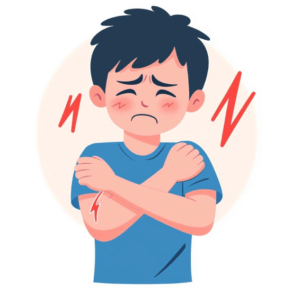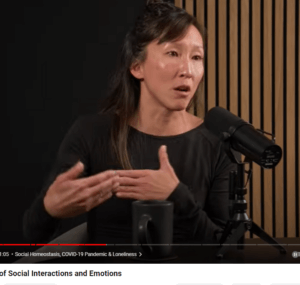
Dr. Anna Lembke: Understanding & Treating Addiction
In today’s exploration of the podcast “Understanding & Treating Addiction” featuring Dr. Anna Lembke, we delve into the intricate mechanisms of addiction and the potential paths toward recovery. Dr. Lembke’s insights provide a fascinating look into how our brain’s chemistry influences addictive behaviors and treatment strategies.
Dopamine: The Double-Edged Sword
Dr. Lembke explains that dopamine, a neurotransmitter associated with the brain’s reward system, plays a pivotal role in both the experience of pleasure and the peril of addiction. Dopamine is not only linked to the joy we receive from activities like eating or social interactions but is also crucial in the process of addiction to substances or behaviors. The podcast reveals that “dopamine is released when food is sensed in the environment even in the most primitive organisms”. This underscores the fundamental role of dopamine in survival, yet its very importance also makes it a focal point in addiction.
Addiction and the Dopamine Deficit State
One of the key points made during the podcast is the concept of the ‘dopamine deficit state,’ which is central to understanding addiction. Dr. Lembke describes how repeated exposure to high dopamine activities or substances can lower an individual’s baseline dopamine levels, making everyday activities less pleasurable and increasing the difficulty of breaking free from addictive behaviors. This leads to a cycle where “chronic exposure…can change our tonic baseline and actually lower it over time”.
The concept of the dopamine deficit state elucidates why those struggling with addiction often find it incredibly hard to find joy in normal, daily activities once addiction takes hold. As dopamine levels are driven down from their natural baseline due to constant stimulation from addictive substances or behaviors, the brain’s reward system recalibrates itself to this new, lower level of stimulation. This recalibration results in what Dr. Lembke refers to as an ‘anhedonic state’—a condition where the capacity to experience pleasure is significantly diminished. The result is a person who may feel persistently low, depressed, or unsatisfied without their substance or behavior of choice, perpetuating the cycle of addiction as they seek out more intense dopamine-releasing experiences just to feel normal.
The Seesaw of Pleasure and Pain
Dr. Lembke uses the seesaw analogy to describe how our brain balances pleasure and pain, and how this balance is disrupted in addiction. When we engage in activities that produce pleasure, like consuming drugs or engaging in high-stimulation behaviors, our brain’s pleasure-pain balance is tipped. To compensate, our brain pushes back, often tipping too far in the opposite direction once the pleasurable activity ceases, leading to feelings of withdrawal and discomfort which fuel the cycle of addiction.
This imbalance is exacerbated by what Dr. Lembke terms “opponent processes,” where the brain’s attempt to maintain equilibrium becomes a driving factor in addiction. Following a surge of pleasure, the brain not only reduces pleasure responses but may also elevate pain responses as a countermeasure. This overcorrection can leave individuals in a state of discomfort or distress, significantly more pronounced than their baseline feeling of normalcy. This heightened state of discomfort drives the individual to seek out the pleasurable activity again, not merely for the high but to alleviate the newly intensified pain, trapping them in a relentless cycle of seeking relief through the very behaviors that reinforce their addiction.
Recovery and Rebalancing Dopamine
Recovery involves more than just abstaining from addictive substances or behaviors; it requires rebalancing the dopamine levels in the brain. Dr. Lembke notes that effective recovery strategies often include creating environments and support systems that help restore this balance. She stresses the importance of understanding that “if you can make it through those first two weeks, the sun will start to come out in week three” in the process of recovery.
Conclusion
Dr. Anna Lembke’s discussion on the Huberman Lab podcast illuminates the complex relationship between dopamine and addiction. It is clear that dopamine’s role extends beyond mere pleasure—it is intricately linked to our survival instincts, and its manipulation through addictive substances or behaviors can lead to profound changes in our brain chemistry. Understanding this relationship is crucial for developing effective treatments for addiction and helping individuals recover and regain balance in their lives.
This analysis highlights the importance of a balanced approach to dopamine management, whether through medical intervention, therapy, or lifestyle adjustments, to combat addiction effectively.




